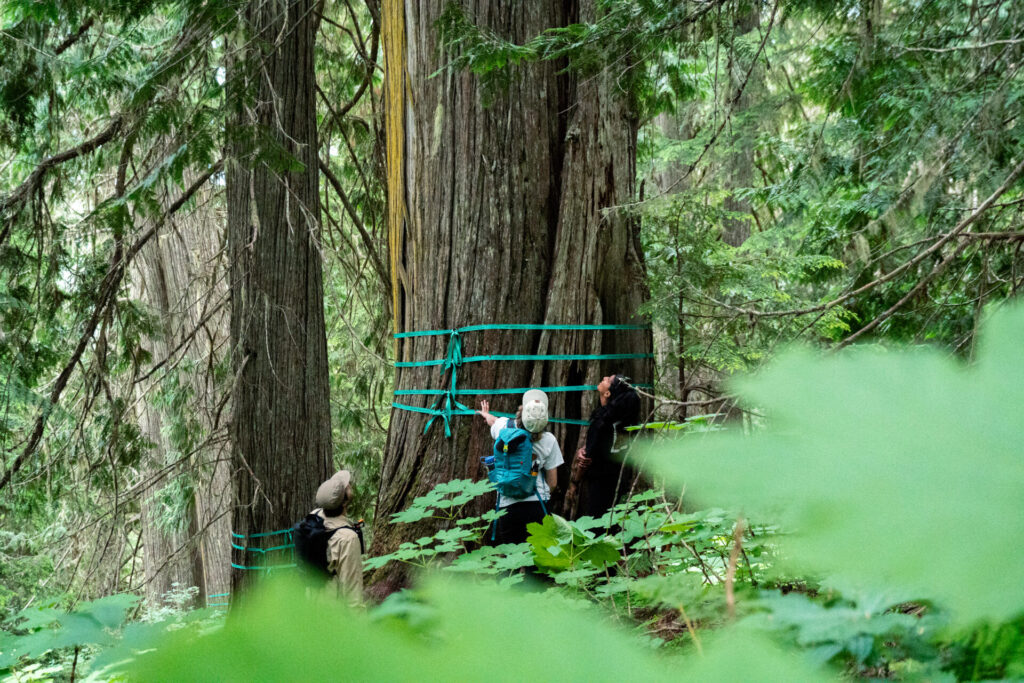Closer to the brink: The state of the forest in B.C. in 2025
Reports & Publications
Closer to the brink
The state of the forest in B.C. in 2025
Report | 2025
Written by Karen Price (PhD) and Dave Daust (M.Sc., RPF)
Forests in B.C. are in crisis. Five years ago, the provincial government acknowledged this crisis and promised to shift from a timber-focused to an ecosystem-focused forest stewardship paradigm. Unfortunately, the province has not yet reported the current state of the forest sufficiently to allow the public and decision-makers to evaluate progress. This independent report attempts to fill that gap by highlighting key forest conditions and trends, assessing whether the province’s actions live up to promises, and identifying where actions fall short of the promised paradigm shift.

About the report
The forests of British Columbia are in crisis. Despite strong provincial commitments over the past five years — including the Old Growth Strategic Review (OGSR, 2020), the Nature Agreement to protect 30 percent of B.C. by 2030 (2023), and the draft Biodiversity and Ecosystem Health Framework (2023) — the province has so far failed to deliver the promised paradigm shift in forest stewardship. Industrial clearcutting, climate-driven wildfires, and myopic conservation progress continue to erode ecological integrity, placing biodiversity, First Nations’ values, communities, carbon retention, climate resilience and future economic opportunities at risk.
These are the key findings of the report:
- Old-growth loss continues: Nearly 5 percent (510,000 hectares) of the 11 million hectares of old growth identified in 2021 has been logged, burned, or removed from the public landbase.
- Logging continues to target at-risk, big-treed forests, particularly on the coast. Since 2021, the rate of logging in big-treed old growth continued to be higher than in forests at lower risk of biodiversity loss.
- Deferral recommendations did not effectively pause logging in endangered old growth: Logging was four times more likely inside at-risk old growth recommended for deferral than in other old growth.
- OGSR recommendations have not yet led to new protection of old growth: Most of the 368,000 hectares of old growth protected by some designation since 2021 stemmed from processes underway long before the province committed to a new stewardship paradigm. Less than 2 percent of the most at-risk forests were protected as a result of new policy.
- Remaining primary forest is dominated by lower productivity ecosystems: Only 2.5 million hectares of high-productivity primary forest (old growth or younger, naturally disturbed forests) with the potential to support large trees remain, much of it in small patches surrounded by degraded forest.
- Wildfire disturbance has increased sevenfold in recent years compared to past decades: Although wildfires are natural parts of a forest’s lifecycle, the increased disturbance driven by climate heating heightens the urgency of protecting remaining old growth from logging.
- There is little evidence of a policy shift that puts ecological health first: The draft Biodiversity and Ecosystem Health Framework is unfinished, conservation progress is glacially slow, and provincial leadership continues to prioritise timber supply over ecological resilience.
- The province’s commitment to 30 x 30 provides an opportunity to shift policy: The 12 percent of B.C.’s forests currently under strong protection are skewed toward low-productivity ecosystems with small trees. Less than 5 percent of high-productivity big-treed forests are protected, far short of goals for ecosystem representation. Achieving 30 percent protection of representative ecosystems will require a shift from safeguarding low-productivity areas to protecting remaining big-treed old growth and younger high-productivity primary forests.
Addressing the intercepting crises of our time calls for the promised paradigm shift in managing forests in B.C., a shift that prioritises ecological health, carbon stores, climate adaptation and human communities above timber revenue and corporate profit. Change will require that the province embraces responsibility for the dire condition of B.C.‘s forests.
Acknowledgements
Lead authors: Karen Price (PhD) and Dave Daust (M.Sc., RPF)
Project lead: Jens Wieting
Graphic design: Mya Van Woudenberg
Mapping: David Leversee
Editing: Aurora Tejeida
A note on November 24, 2025: Report edited to correct Figure 11B (page 31) and simplify Figure 12 (page 33).
You can help protect healthy ecosystems
Donate today. Together, we can build a brighter future.

Photo Credits: Bailey Repp
